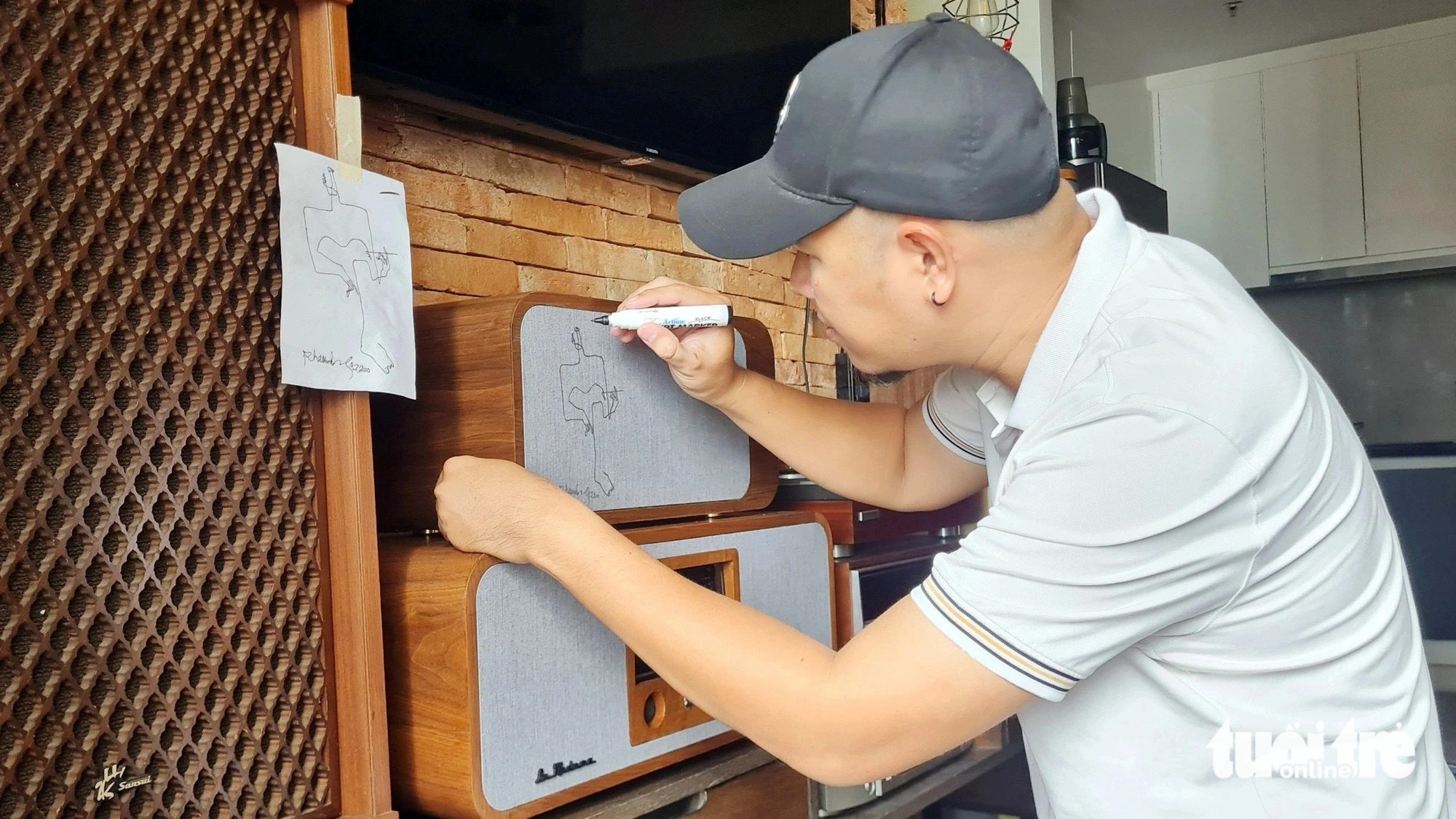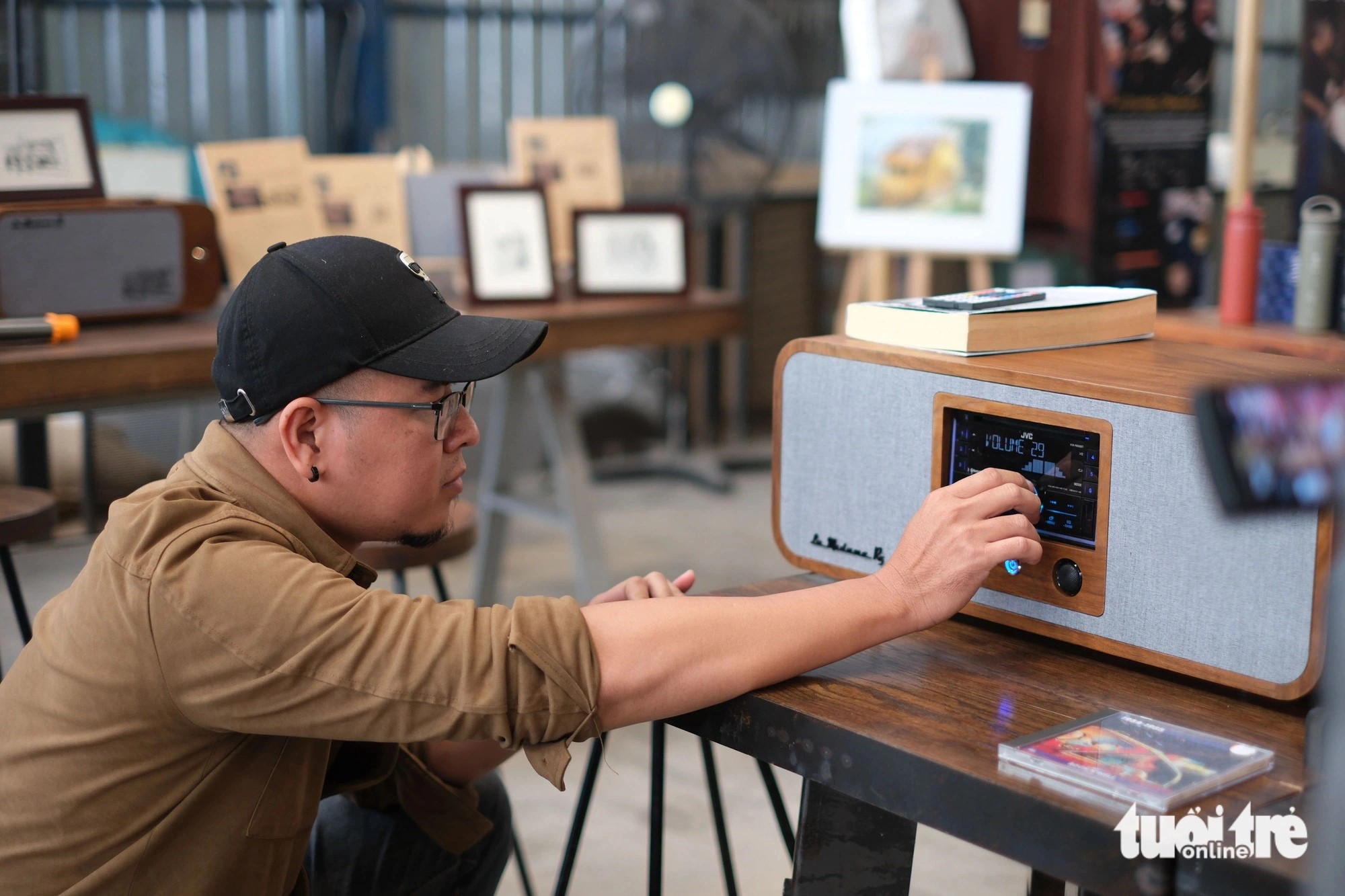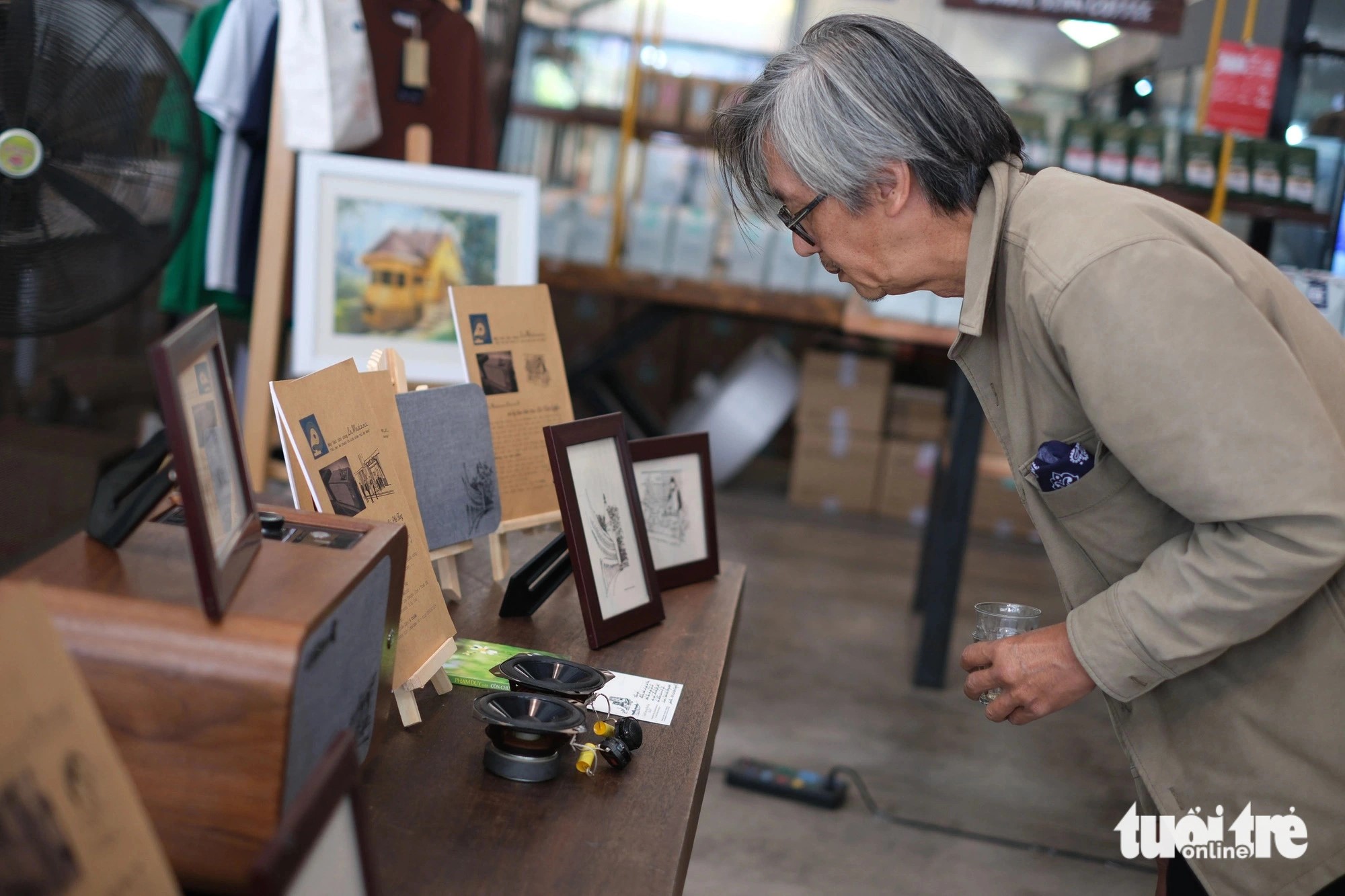Presenting Lam Thanh Tung, a venerable 37-year-old architect and instructor at Ho Chi Minh City University of Architecture.
Tung’s steadfast devotion to architecture, technology, and audio persists amidst challenges.
Despite architecture being his profession, his commitment to technology and audio has been a lifelong pursuit.
By seamlessly blending his passion and ingenuity into these endeavors, Tung has materialized his own collection of music players dubbed ‘La Madame,’ remarkably crafted entirely from e-waste.
La Madame Music Players
Tung’s pioneering approach not only underscores his artistry but also confronts the pressing issue of e-waste recycling.
Through the transformation of discarded electronic materials into aesthetically pleasing and functional music players, he exemplifies the potential of sustainable design solutions.
His work not only results in beautiful products but also fosters awareness about responsible consumption and waste management.
His dedication to harmonizing architecture, technology, and audio stands as an inspiring testament to creativity’s contribution to environmental sustainability.
“My motivation for creating La Madame was twofold: to recycle e-waste, which is notoriously difficult to dispose of, and to craft a befitting adornment. It would be ‘extremely distasteful’ to profit from handcrafted music players,” Tung elucidated.
For him, La Madame represents both a passion project and a career-driven environmental mission.
|
|
| Architect Lam Thanh Tung adds a personal touch by drawing on the speaker grilles of each music player. Photo: M.V. / Tuoi Tre |
From sourcing suitable components to conceptualizing the player model, crafting molds, and assembling the sonic devices, Tung meticulously undertakes every stage in the process of creating a La Madame music player.
“My music players are handmade, so they may not attain the same degree of perfection as commercially manufactured products. Just as no two leaves are alike,” Tung remarked about his creations.
This sentiment resonates with numerous visitors to exhibitions showcasing his handcrafted music players.
Vo Trung Dung, a French-Vietnamese citizen presently residing in Da Lat, a resort town nestled in Vietnam’s Central Highlands, commended Tung’s initiative to “resurrect sounds from recycled components,” deeming it highly commendable.
According to Dung, Tung’s transparency regarding the materials employed in crafting the music players is paramount.
Without such transparency, few would realize that he repurposed discarded audio components from automobiles to create these high-quality, aesthetically pleasing music players, which serve not only as functional devices but also as decorative accents in homes.
“His products are not far behind those of prominent brands. Tung’s handmade music players are both eco-friendly and highly personalized. In Europe, such products often command exorbitant prices,” observed Dung.
To demonstrate the craftsmanship behind his handwrought music players, Tung willingly disassembles finished products during exhibitions to reveal their inner workings to attendees.
He emphasizes the products’ simplicity, soldering the circuit boards and crafting the wooden frames himself.
Tung also designs a variety of shapes for the music players, ensuring they complement different household spaces as decorative items.
Regarding the types of electronic waste used in crafting these music players, Tung clarified, “We primarily utilize in-car audio systems from the 2010s, car door speakers, and broken electronic components that would otherwise end up in landfills.”
|
|
| Architect Lam Thanh Tung proudly highlights his handmade music player creation. Photo: M.V. / Tuoi Tre |
Infusing Memories into Every Music Player
To say that Tung has given e-waste a second life by creating music players is accurate, but it barely scratches the surface.
Each of his music players carries with it a treasure trove of unforgettable memories.
He fondly recalls the days when luxurious Japanese cars adorned with CD players from renowned brands would gracefully glide through the streets.
However, in Vietnam, the trend shifted due to the widespread desire for upgrading audio systems to incorporate electronic screens.
Consequently, many car owners discarded their original audio setups.
This disheartened Tung, who saw an opportunity to repurpose these abandoned CD players and door speakers into music players for reuse or resale, thereby addressing a significant portion of e-waste.
Tung spent nearly a year exploring how to turn this idea into reality, but progress stalled.
It was not until the onset of the COVID-19 pandemic, which forced him to halt work for several months, that Tung revisited the concept.
“I tinkered with piles of e-waste every day until I finally pieced together a fully functional music player. Yet, I hesitated to consider selling them,” Tung recounted.
Creating a few for personal enjoyment would not suffice to tackle the multitude of discarded car audio systems.
Most car modification shops routinely strip and get rid of the original audio setups before customizing vehicles.
Tung admitted to feeling unfamiliar with the sales process, compounded by the handmade nature of his products, which diminished his confidence in entering a market dominated by established brands.
“It occurred to me that handmade audio devices would be more captivating if they were unique, personalized, and capable of narrating their own tales,” Tung mused.
Thus, Tung began infusing his music players with narratives.
For customers in Da Lat, he adorned the speaker grilles — typically crafted from cloth, wood, or iron — with depictions of local landscapes or renowned figures synonymous with the highland city.
He conveyed other stories through color schemes tailored to products destined for Nha Trang or Ho Chi Minh City.
And for special orders, he meticulously etched unique narratives through drawings or laser engravings.
Despite their imperfections, each of Tung’s music players tells a story.
They serve as testaments to consumer culture, encapsulating how individuals engage with their surroundings, reflecting the designer’s personality, and conveying messages from their buyers.
|
|
| Lam Thanh Tung’s handmade music players captivate the interest of residents in Da Lat City, Vietnam. Photo: M.V. / Tuoi Tre |
Handwrought Speakers Enter Commercial Market
By 2022, the speakers crafted from recycled materials by architect Tung had reached such a level of quality that he began commercial sales.
Tung has chosen not to disclose the exact number of speakers sold to date.
However, he revealed that car modification shops are now selling him discarded electronic components wholesale, a departure from their previous practice of either giving them away for free or vending them at nominal prices.
In anticipation of future speaker models, Tung has been diligently stockpiling junked components for later use.
Nguyen Huynh Nam, a student from Da Lat University, expressed excitement upon hearing the sounds emanating from Tung’s recycled speakers.
“If Tung hadn’t mentioned that the La Madame music player was made of recycled materials, I wouldn’t have known and would have assumed it was a mass-made product,” remarked Nam.







